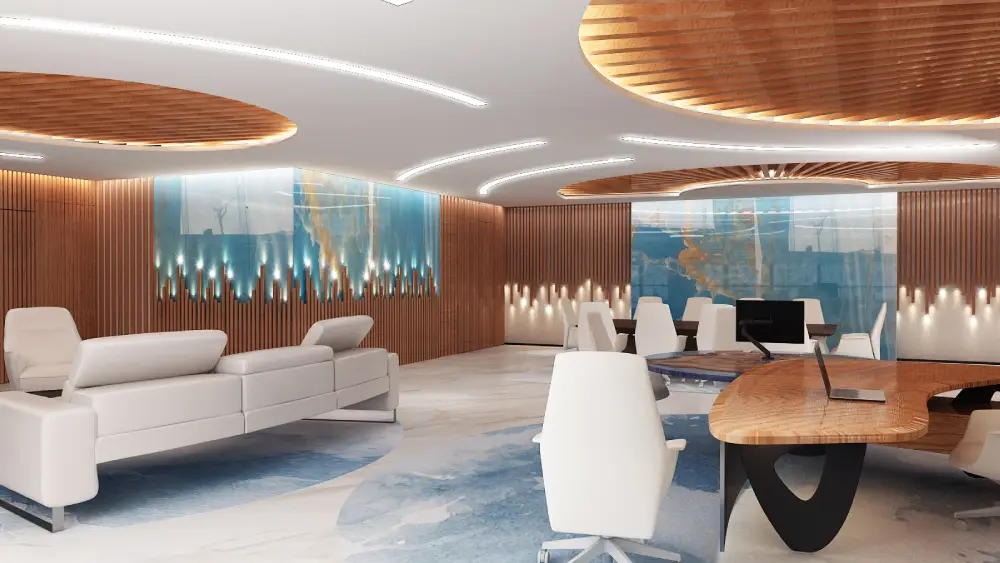
The office interior fit-out is continually evolving, reflecting broader trends in design, technology, and workplace culture. Exploring different styles and trends can help you create a workspace that improves productivity, aligns with your brand identity, and adapts to modern work practices. If you run an office fit out company in Dubai, you should be aware of the popular styles and emerging trends in office interior fit-outs.
Modern minimalism:
Modern minimalism is characterized by clean lines, neutral color palettes, and a focus on simplicity. This style focuses on functionality and uncluttered spaces, often incorporating sleek furniture, hidden storage solutions, and ample natural light. The minimalist approach helps create a serene and efficient environment, reducing distractions and promoting focus.
Industrial chic:
Industrial chic blends raw, unfinished elements with stylish design. Exposed brick walls, concrete floors, and metal fixtures are common features of this style. This trend often includes reclaimed wood and vintage furniture, creating a unique and edgy look. Industrial chic offices are praised for their authenticity and character, making them popular among creative and tech-driven companies.
Flexible and agile workspaces:
As remote and hybrid work models become more prevalent, flexible and agile workspaces are gaining traction. This design approach focuses on creating adaptable environments that can easily change to accommodate various work styles and activities. Movable partitions, modular furniture, and multifunctional areas support vigorous workflows and collaborative efforts. This trend helps optimize space usage and supports a diverse range of work needs.
Sustainable design:
Sustainability is increasingly important in office fit-outs. Sustainable design incorporates eco-friendly materials, energy-efficient systems, and waste reduction practices. Features like recycled materials, low-VOC paints, and energy-efficient lighting contribute to a greener workplace. This trend reduces environmental impact and also reflects a company’s commitment to corporate social responsibility.
Tech-integrated spaces:
The integration of technology into office design is a growing trend. Smart office solutions include automated lighting, climate control, and advanced audiovisual systems. High-tech meeting rooms with video conferencing capabilities and interactive displays are also becoming common. Tech-integrated spaces improve efficiency and provide a modern, innovative environment.
Wellness-centric design:
Wellness-centric design focuses on creating spaces that support physical and mental well-being. This includes ergonomic furniture, dedicated relaxation areas, and amenities like fitness centers or meditation rooms. Incorporating elements such as natural light, acoustic treatments, and calming color schemes can improve overall employee health and satisfaction.